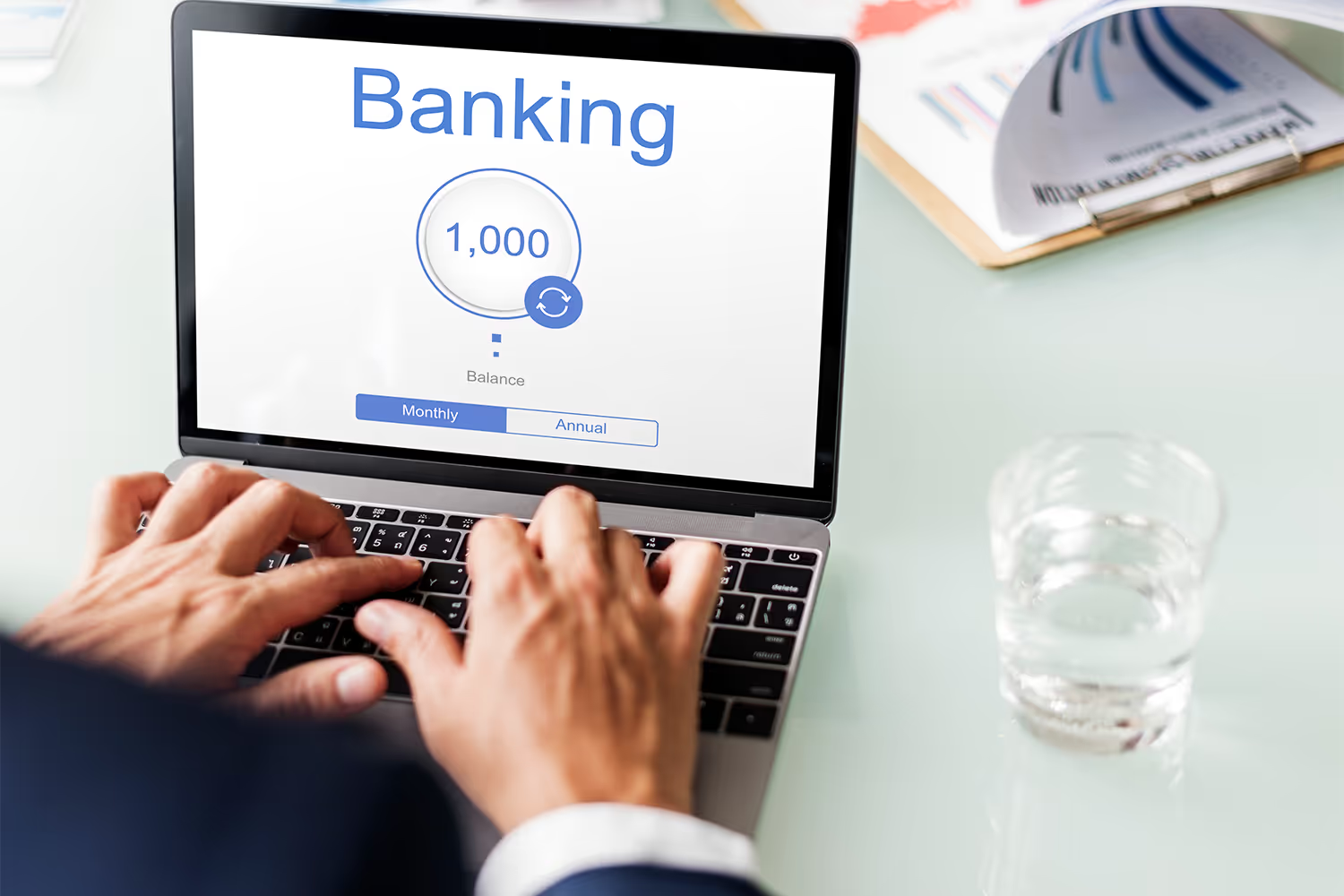
This is what you need to know before seeking business loans
Entrepreneurs in each stage of their development need resources. It requires a strong investment to get started; when the business is up and running, liquidity is needed to meet financial obligations or to invest in improvements in order to attract more customers.
There will be times in this life cycle when it is necessary to reinvest in the business, either to buy machinery or equipment, develop special projects such as bids, create advertising or open a new headquarters. All these scenarios are quite common in the life of small and medium-sized enterprises (SMEs) and to finance them, other sources of resources such as credit are needed.
In Mexico, there seems to be a certain fear regarding loans, so in this post we will analyze in depth why loans are important, what are the options, how to choose them and what are the minimum requirements to apply for them. By doing so, you will have information that will help you to compare the financial options that are within your reach.
Importance of loans for SMEs
Due to the number of jobs they create, and because their products strengthen local economies and support their communities, SMEs are a key part of Mexico's economy.
However, these were also the most affected following the health emergency and the economic crisis experienced since the beginning of the COVID-19 pandemic in 2020.
According to the Business Demographics Study (EDN) 2020 conducted by Inegi, of the 4.9 million of micro, small and medium-sized establishments reported by the 2019 Economic Censuses, an estimated 3.9 million (79.2%) survived 17 months after the conclusion of the census survey.
During this same period, it is estimated that 1,010,857 establishments closed their doors for good, representing 20.8%, and 619,443 establishments were born, representing 12.8% of the country's business population.
If we compare the total number of economic units estimated by the EDN in September 2020 with those captured by the Economic Censuses in May 2019, we have a decrease of 8.1%.
In terms of the annual growth of the credit portfolio to the non-financial private sector in the period 2012-2021, according to figures from the Bank of Mexico (Banxico), credit to SMEs increased consistently until reaching its peak in May 2016 and then began to decline, reaching March 2021 with the lowest cumulative growth of all types of portfolio during the review period.
Between April 2020 and March 2021, all credit portfolios decreased except for housing finance, according to Banxico.
In this scenario, it is important to provide them with the tools and resources to help entrepreneurs face the obstacles that affect their growth and, in some cases, their survival. Access to financing is one of the most important challenges.
Thus, if lack of financing is one of the reasons limiting small business growth; What are the reasons why it is not happening?
In the 2019 financing survey, INEGI found that 73.6% of SMEs and microbusinesses answered that they would not accept a bank loan if they were offered.
Under the same findings, entrepreneurs answered that the main reason they would not accept is because it is expensive (50.5%), followed by they do not need it (34.5%) and they do not trust banks (6%).
What can you use a business loan for?
We know that a loan is a daunting topic, but at some point it will be necessary to take things to the next level. Before we start researching what's involved in getting a small business loan, the first thing on that list is to figure out exactly how you will use that cash flow coming into your business.
This is very important because without a strategy or a plan on how to put that money to work, you could fall into bad financial practices that put your business at risk.
INEGI found that most businesses use the resources of a loan to purchase supplies, machinery and pay other loans. Most of these options are investments to put the money to work.
For example, credit for the purchase of supplies or for the payment of salaries is something that should normally be financed by net sales revenues, but if a company takes advantage of credit in this way, it is likely to have a growth strategy. Ultimately, it is an investment that in the short, medium or long term will generate profits for the business.
In addition, an important thing to note is that 25.6% of the entrepreneurs indicated that they use the money to pay other loans. If not planned, this is a use that has to be done with caution since it can get you into an infinite cycle of payments.
When should you apply for a microenterprise loan?
Despite the fact that several entrepreneurs proudly boast that they have never had to be in debt to get their business off the ground, there are several situations in which "being in debt" is a risk worth taking.
Below we share the main reasons of the entrepreneurs:
- Find new markets: Either you are thinking of opening a new branch in another neighborhood or in another state, they will probably experience longer cash cycles. After all, it is about repositioning a product or service elsewhere. In this case, the loan becomes an auxiliary to overcome the financial challenges that come with this growth.
- Increase working capital: Increasing the number of employees is an indicator of growth; in fact, INEGI economic censuses show that establishments with more employees are statistically the ones that generate more income.
- Supply purchases: The purchase of equipment or a large order to replenish your inventory is an investment that in a long term will generate wealth since it suggests increasing your business production.
- Build a credit history: It is important to develop a good credit history, even if it is for relatively small amounts. This way, in the future your business will have more options to apply for financing for much larger amounts.
- Improve cash flow: When the loan requested is long-term, for example 10 years, entrepreneurs may need to advance payments on that debt or amortize it in some way, so that cash flow can be improved. As mentioned in the previous section, you have to be very cautious in this case, as you can fall into a cycle of interest and this can put your business at risk.
If your business is a small, medium or micro enterprise, the best thing to do is to ask for a simple credit, especially if it is an amount that will be used to buy supplies or equipment, increase personnel, etc. To make things simpler, we will explain below what a simple credit is and what types exist:
A loan is always an amount that you request, which you will be able to pay back over a long period of time in differentiated payments. As you pay it back, you will not be able to use it again, as with a credit card. It is worth mentioning that there are different types of simple credit and each institution offers different conditions, which we will explain below.
Simple credit classification
It is essential for you to know that the difference between each type of simple credit is based on the way in which you as an entrepreneur will repay the total amount you borrowed.
- Without guarantee: The financial institution and the creditor establish a contract where the terms to be paid and possible penalties in case of non-payment are established.
- Pledged as collateral: This is granted when a tangible asset such as a vehicle or merchandise is pledged as collateral.
- With Fiduciary Guarantee: A surety company acts as intermediary and co-responsible for the corresponding financial institution to grant payment.
- With Personal Guarantee: This is done with a guarantor, also known as a joint and several guarantor.
- With liquid guarantee: Under this scheme you pay in advance one or two monthly installments to be granted credit and, depending on the financial institution, it returns the amount to you after you finish paying or takes it into account as an advance payment.
- Group: You can apply for a loan with a group of people (the number of people involved depends on each financial institution).
Who can offer simple business credits in Mexico
According to Condusef, only companies that are under the above-mentioned legal figures are authorized to offer simple credit:
- Development Banking Institutions: Traditionally, these banks are dedicated solely to promoting a country's economic growth through the financing of important productive sectors. These are not to be confused with Commercial Banking, these are the ones that people use for their payments, deposits or cash withdrawals.
- Multiple Banking Institutions: - Multiple Banking Institutions: This type of banking is characterized by providing various services under the same figure, in the same way as it would do individually.
- Popular Financial Societies (Sofipo): These are entities authorized by the National Banking and Securities Commission that can offer popular savings, credit and investment services in geographic areas.
- Multiple Purpose Financial Societies (Sofomes) These are organizations that may grant credits. In this group there are two types: Regulated Entities (R.E.) and Non-Regulated Entities (N.R.E.), in the case of R.E. they must be supervised by the National Banking and Securities Commission (CNBV). In the case of N.R.E.'s, they must only be related to the CNBV to prevent money laundering.
It is important to clarify that all these institutions are under constant supervision of Condusef and the CNBV to ensure that they operate legally and to prevent consumers seeking alternatives to obtain credit from becoming victims of crime.
How to know which Financial Institutions are trustworthy
If you are at the stage of investigating your options, you can verify that they are registered institutions, through the National Catalog of Financial Products and Services of CONDUSEF. Follow this small tutorial to corroborate that the institution you are interested in is registered to provide this type of credit.
Access the search engine page and select the search option by product. Then click on the credit option and select simple credit. On the screen the options will appear in alphabetical order. If you wish to search for a specific institution to verify that it is registered, you can search for the name of the institution in the search bar.
5 Key credit fundamentals
When you receive your credit offer or contract, it is very important that you understand the terms of the document you receive and know what the implications are.
- Creditor or lender: The financial service provider that makes available to an individual or legal entity an amount of money that must later be repaid by the latter.
- Debtor or obligee: The individual or legal entity that requests and uses the amount granted by the Creditor or Lender and has the obligation to pay the amount, with the interest and commissions agreed upon with the financial institution.
- Loan term: The number of months that the debtor or obligee must pay to cover the requested loan.
- Interest rate: This is the percentage of the total value of the amount of money you are borrowing. In simpler words, if you rent a property, you have to pay the corresponding amount for using that location, the same happens with the money. This percentage also helps you to identify how profitable the investment you are going to make will be.
- TIIE: This is the representative rate established by the Bank of Mexico (Banxico) for credit operations. It is calculated daily by Banxico, published in the Official Gazette of the Federation (DOF) and can be consulted in terms of 28, 91 and 188 days.
What are the requirements to apply for a business loan?
There are some loans that require a collateral, but as we saw in the section on types of loans, there are other financial products that do not require guarantees or establish other types of conditions.
This is the basic list of documents to apply for a simple credit (the most recommended for small, medium and micro enterprises):
For Legal Entities:
- Current official identification with photograph and signature of the legal representative.
- Credit Application.
- Company's Articles of Incorporation and Bylaws in force.
- Powers of attorney of the legal representatives (attorneys-in-fact).
- Proof of income (bank statements or tax returns or financial statements, etc.).
- Tax Identification Card (RFC) and Registration before the SAT.
For Individuals with Business Activity:
- Credit Application.
- Current official identification with photograph and signature.
- Proof of income (bank statements or tax returns or financial statements, etc.).
- Tax Identification Card (RFC) and registration with the SAT.
4 factors to be evaluated before applying for a business loan
A phrase that usually comes with a lot of nervousness is being in debt, but it doesn't have to be that way. If you're already thinking about taking out a loan for your business, you've probably already researched what options are available, so it's time to analyze which option is best for your business. Below you will find 4 things you should evaluate in your search:
How easy will it be to repay the loan
Credit was designed to advance purchases or pay for them in installments, so in this way you do not sacrifice the liquidity of your business. With that in mind, when analyzing the possible options for your business, you should consider the following points:
- How much you need: All credit lines have a limit on the amount you can borrow. In order to define this issue, it is preferable that you have the advice of a professional to review your financial or accounting documents, since if you apply for a larger amount than you need, you will increase your debt unnecessarily.
- What will be the final amount to be paid: Estimate this including interest and commissions, calculating how much you are going to pay in total. To do this, check if the websites of the institutions you are considering have a credit simulator. As for the interest to be paid, do not panic. Remember that it is an investment and if you invest the loan in your activity, you can deduct the interest from your taxes.
- The time frame in which you plan to pay: Again, it will be much better if you can make this decision with the assistance of an accountant. In this same sense, another aspect that you should investigate very well are the conditions of the payments. For example, ask if there are penalties, early or late payments, and if these can be automated. When you know all these details, define well a schedule and how this scheme will change your cash flow.
How fast is the application process?
When deciding which financial institution to apply to for credit, time is an important factor (although not the main one). The process of applying for a loan can be lengthy in some cases because of the amount of documents you have to share or the extensive forms you have to fill out. So it is also very important that before you apply for the loan you determine how much time you will be able to dedicate or if you will need the funds by a certain date. This way it will be easier to rule out options.
Financial institution reputation
Think of lending institutions as a new supplier. In theory, you would not deal with someone you have not previously investigated. The best thing to do in this case is to check the Internet for reviews of other businesses, do not provide documents or credit card information if you are not sure of the company's reputation. With the help of the Internet there is no excuse for not investigating and being sure, you can also look for the Condusef registry mentioned above.
4 Mistakes to avoid when growing your business
We have seen throughout this text that a loan is mainly used to grow, increase production or expand a business. So if this is your objective then you must also take into account the mistakes you must avoid at all costs so that the growth of your business is successful at the same time that you comply with the financial commitment.
Failure to analyze the company's performance
Perhaps you think it's time to grow because you are experiencing more demand than usual. So, before scaling things to the next level it is very important that you ask yourself how steady the increase in demand is, and what percentage of growth it represents. Also, before putting your growth plans into action, it is worth thinking about how it will affect the operation of the business, is there a process you need to adjust, and if the answer is yes, you will need to put it down to paper.
Not having a strategy
You should use a business plan as a guide to know if the added value of your product should evolve as you grow, if your distribution channels will be different, and how it will impact your operating costs. Having this in mind, along with your short, medium and long term goals and expectations, the transition can become easier.
Do not seek advice
You are not expected as the owner of your own business to be an expert in everything, so it is best to find a good advisor or even consider a partner to complement your areas of expertise in finance, sales, marketing, etc. Understand that your business already has value and without the knowledge of legal, financial, tax and operational issues, business growth may suffer.
Not being clear about the financial situation
How does the cash flow behave? How is the company's capital structure? Are your financial statements healthy? These are questions, whose answers you must have very clear before acquiring a loan. Whether you are growing or not, being aware of the state of your finances should be a rigorous discipline, since knowing the day-to-day record of how much was sold and how much was spent will help you determine the total amount you need to cover and the repayment schedule you can meet.
Conclusion
The financial market in Mexico offers products and programs designed for SMEs. All of them have their own characteristics and you will have to choose them according to your needs. It is important that you first investigate the credit options available in the market, the conditions and requirements of each one of them.
Do not forget that applying for financing is a very important decision that can help you achieve your goals and objectives if you do it responsibly. Make sure that the institution you apply for your loan is 100% legal and reliable in order to avoid possible fraud.
Sources: Banxico, CNBV, Condusef, INEGI

As a leading fintech company, we are frequently under the spot.
Go to Clip in the news*Spanish content only
By clicking Subscribe you're confirming that you agree with our Global Policy.


Explore our current positions. Your next job could be around the corner.
Go to careers


.avif)


